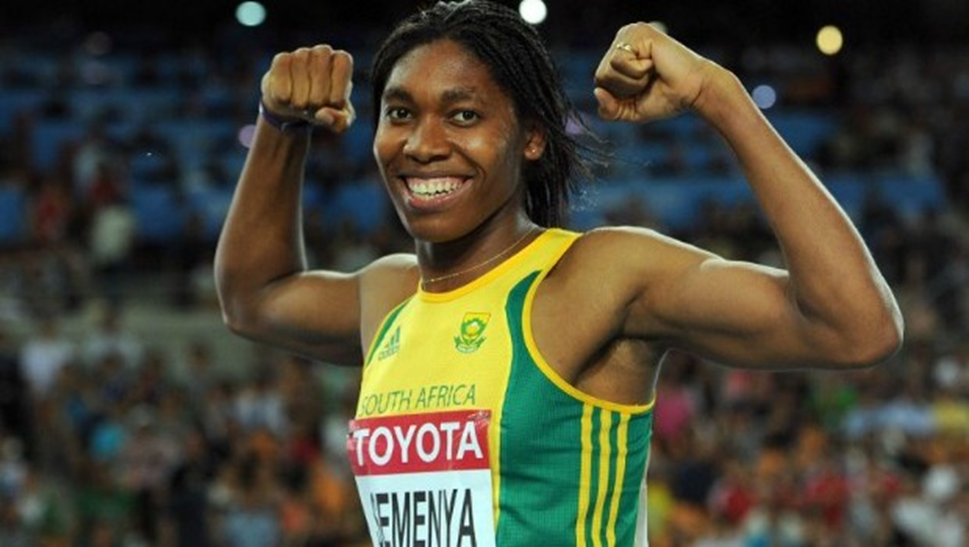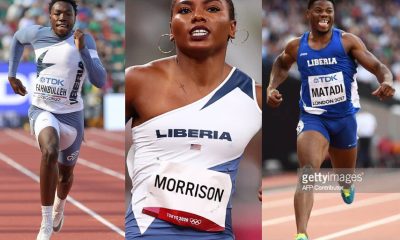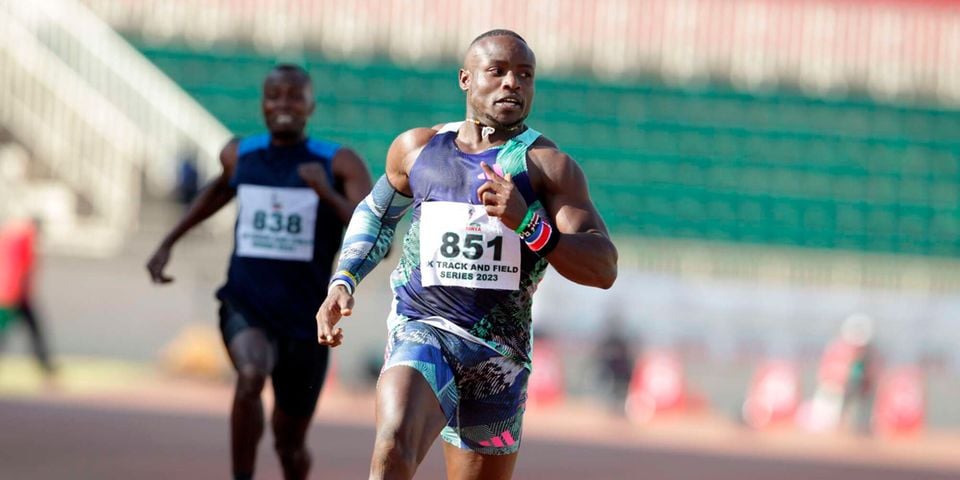
Caster Semenya burst onto the global scene in 2009 when she won gold in the 200 meter at the Berlin World Championships with time 1:55:45. Following her victory, Semenya was plagued by an intrusive media storm that questioned her gender, regardless of the accounts from those who knew her best.
“I gave birth to her and as a mother, know that she’s a girl, not a boy,” said her mother, Dorcus Semenya in a documentary. Some of her fellow athletes didn’t concur. “These kind of people should not run with us. For me, she’s not a woman. She’s a man,” Elisa Cusma told Italian journalists.
In a move that inadvertently lead to humiliation, the IAAF, athletics governing body stated that a gender verification test would be issued by “a group of medical experts.” Pending the results, Semenya was suspended from all competition. In 2010, after 11 months of being sidelined, she was allowed to run again.
“It wasn’t easy for me,” she told a small gathering of journalists in Norway. “My manager, my training partners were on my side – they always wanted me to come to train, but I didn’t want to come to train. I told them, ‘Why should I come to train for something that I don’t know? I cannot come to train when I don’t know if I’m going to run.’”
Return to track, interrupted
In April 2011, armed with the argument of “fairness,” the IAAF introduced a rule to curb females with hyperandrogenism, a term used to describe the excessive because they have higher levels of androgens than women. Specifically, the androgenic hormone being targeted is the performance enhancing one, testosterone.
Therefore, female competitors with testosterone levels in the same range as men are considered to have a competitive advantage and are required to lower it with treatment. It’s unknown if Semenya took the treatment or not, however, she appeared different after that. Some reports suggested that hormonal therapy might be the reason for her deteriorating speeds since 2009.
The Double Standard
The new regulation was not well received. Many argued that the new stipulation was a double standard in a male-dominated world of sports. [perfectpullquote align=”full” cite=”” link=”” color=”” class=”” size=””]“Why are powerful male athletes celebrated and powerful female athletes suspect?” [/perfectpullquote]
they asked. For instance, if a male competitor possessed a genetic element that elevated his competitive advantage, would we be having this discussion? Probably not. In fact, dominating male athletes like Usain Bolt are praised for the otherworldly “natural ability.”
“Bolt is a genetic freak because being 6ft 5ins tall means he shouldn’t be able to accelerate at the speed he does given the length of his legs,” former Great Britain sprinter Craig Pickering told the BBC. “At the beginning of a race you want to take short steps in order to accelerate, but because he’s so tall he can’t do that. But then when he reaches top speed he has a massive advantage over everyone else because he’s taking far fewer steps.”
Other examples of athletes with extraordinary natural ability are Micheal Phelps, a swimmer whose muscles produce less than half the lactic acid of his rivals, hence giving him the remarkable power of recovery. Or how his disproportionately long torso aids his propulsion. Then, there is the NBA’s Giannis Antetokounmpo aka “The Greek Freak.” According to sports scientists, Antetokounmpo may have the longest Achilles heel in basketball. Hence giving him the ability to run the entire length of the basketball court in two dribbles.
Seriously, look:
Dr. Sam Allen, an expert in sports science at the Loughborough University, sums up this position. In this BBC article, he said: “the best sprinters will always benefit from having a huge amount of natural ability.” So why does it have to be different for Semenya and others like her?
However, opponents of this position like Russ Tucker, a Professor of Exercise Physiology would argue that Bolt’s and Phelp’s “genetic ‘luck’ doesn’t put them into a different category, and also, Semenya’s ‘advantage’ is actually a ‘disadvantage’ to competing.” He explains his position in detail here.
The Spectrum of Sex
In the world of sport, sex is simply categorized as male and female. To the contrary, many scientists agree that sex varies on a spectrum, and no one can be 100% male or female.
In 2015, the Court of Arbitration, in a case involving Indian sprinter Dutee Chand, acknowledged this complexity. “Although athletics events are divided into discrete male and female categories, sex in humans is not simply binary,” the court said in its 161 pages dissertation. “As it was put during the hearing: ‘Nature is not neat.’ There is no single determinant of sex.”
Also at the hearing, both sides agreed that exogenous (synthetic) testosterone increased athletic performance. However, they intensely disagreed on whether endogenous (natural) testosterone produced the same result. Chand’s legal team argued that synthetic testosterone “upsets the body’s equilibrium by dislodging its natural hormonal stasis” whereas natural testosterone does not.
In the court’s ruling, the panel was “unable to conclude that hyperandrogenic female athletes may enjoy a significant performance advantage that it is necessary to exclude them from competing in the female category.” Following, the IAAF was given two years to provide stronger evidence that enhanced testosterone improved athletic performance.
Consequently, the hyperandrogenism regulation was suspended by the IAAF for two years hence allowing Semenya to compete without limitation.
Running Free: Faster, Higher, and Stronger
“You will run in Rio with your natural force, your body altered exclusively by the decades of disciplined training required of an Olympian,” Eleni Schirmer wrote in an open letter to Semenya.
Following silver medals at the 2011 World Championships and 2012 Olympics, Semenya’s career seemed to be fading into oblivion. Last year at the IAAF World Challenge in Dakar, Senegal, Semenya was a distant fifth in her race.
This year, she has been nothing if not an extraordinaire. First, she put the world on notice when she won the 400m, 800m, and 1500m races, at the Stellenbosch South African Senior Athletics Championships. She accomplished this on the same day in a little over four hours but still managed to lock in Olympic qualifying times for the 400m and 800m. By many accounts, it was one of the most exceptional individual displays of middle distance running ever witnessed.
Second, in May, she reasserted herself by winning her first Diamond League since 2011 in a meet in Doha, Qatar. Unlike her previous race, the competition was world class and included former World Champion, Eunice Sum of Kenya. Further, Semenya would coast to victory in all her other Diamond League meets in Rabat, Rome, and Monaco.
Next, at the African Championships in Durban in June, Semenya won a 1500m race in Olympic qualifying time. Hence, making it the third event in which she had posted Olympic caliber time. However, after her meet in Monaco, the leading athlete told BBC radio that she thinks she will take part in “two events, four and eight.”
“But, yeah,” she said, “we still have to go decide again.”
According to world rankings, Semenya is the 1st in Women’s 800 and 40th in the 400. It’s difficult to make predictions, but my money is on Semenya. Nothing is holding her back now.
“I had fun. You’ve got to enjoy what you do… I haven’t had fun in a while,” Semenya said after the South African Championships.
Featured Photo: Caster Semenya (Photo: thedailybeast.com)










